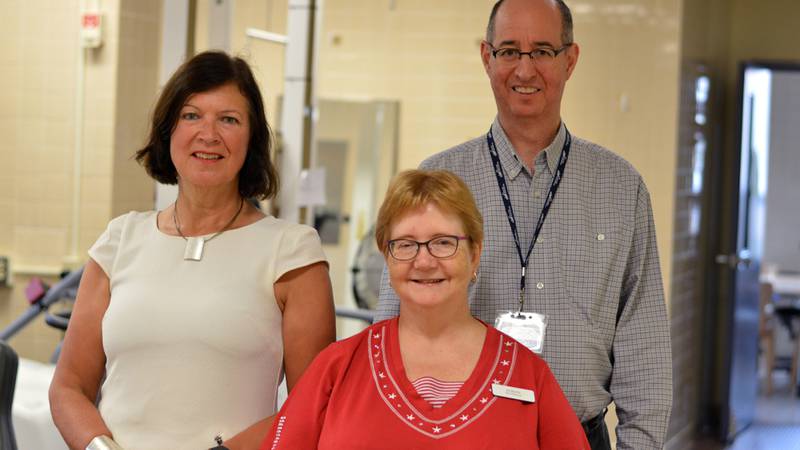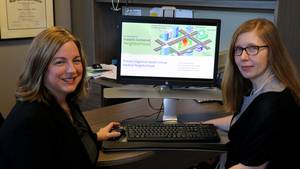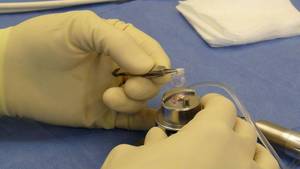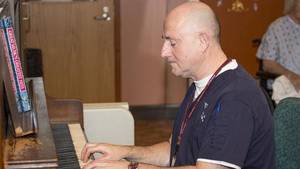A grueling hour on a treadmill daily might seem strange for someone who recently had a stroke but believe it or not, the sooner they start moving, the better.
One of the more exciting medical discoveries in the past several decades has been neuroplasticity — the brain’s ability to rewire itself and rediscover functions lost during trauma. In the case of stroke, those lost functions might be standing, walking or balance, the simple locomotion we take for granted, wiped clean by a medical emergency.
Alison McDonald is a physiotherapist with the QEII’s Rehabilitation and Arthritis Centre in Halifax. She says that not only is early rehabilitation important when rewiring the brain following a stroke, so is intensity, and this presents healthcare providers in her position with a conundrum. Putting patients through rigorous exercise after stroke, such as weight training and cardiovascular exercise, so soon after their ordeal will speed recovery and provide better outcomes — but can they handle it?
“We’ve likely been undertreating our patients who’ve had strokes because we didn’t want to push them too hard,” she says.
Marilyn MacKay-Lyons is a professor at Dalhousie’s School of Physiotherapy and an affiliate scientist at the QEII. She said that about 40 per cent of Canadians who survive a stroke recover well without assistance but 35 per cent suffer enough loss of function to require rehabilitation. The remaining 25 per cent typically depend on assisted living thereafter.
“Sixty-two thousand Canadians a year suffer from stroke,” she says. “Stroke is the leading cause of adult disability in Canada and one of the leading causes of death.”
These numbers speak to the importance of stroke rehabilitation but quality of care is often stifled by this question of how much retraining exercise recent stroke patients can bear. From 2016 until early this year, Marilyn and program manager of acquired brain injury services with the rehabilitation centre, Richard Braha, put a possible solution through its paces.
With a QEII Foundation Translating Research Into Care (TRIC) grant, they purchased equipment, trained staff and put into motion the Aerobic Screening and Prescription, or ASAP, clinic. By way of monitoring equipment and stress test procedures, this clinic screened patients after stroke to determine their fitness level and state of readiness for the rehab exercises that awaited them. This was done on treadmills with harnesses that take up part of the patient’s weight or special cycling machines that can be pedaled with both arms and legs. The patients were asked to rate their experiences and gauge their effort while being closely monitored by ECG and blood pressure machines. Physiotherapists like Alison no longer needed to guess at a patient’s readiness to work — this clinic narrowed them down into categories of intensity and motivation.
“After your first stroke, it’s normal and natural for people to be cautious and not increase their level of activity,” says Marilyn. “What this study is doing is giving therapists and patients the green light, saying you’re OK to go this hard and for this long. Without that, people are more inclined to do nothing, which raises their risk of a second stroke.”
“Sixty-two thousand Canadians a year suffer from stroke.”
-Marilyn MacKay-Lyons
The ASAP clinic saw 104 patients throughout its two-year trial and had exactly the desired outcomes — a significant increase in screenings, prescriptions, timeliness of care and intensity of rehabilitation. Simply put, it worked. Armed with these results, Richard is in the process of including this clinic in the QEII’s Nova Scotia Rehabilitation and Arthritis Centre’s regular services.
“We look forward to the continuation of the clinic following this study, and having it available for our entire rehabilitation population,” he says.
Richard went on to say lifestyle related factors as exercise, diet, sodium intake, weight, smoking, and alcohol intake can significantly increase the risk of stroke. Rehabilitation is vital but so too is the regular exercise which helps prevent strokes in the first place.
“Exercise and the role it plays in improving cardiovascular capacity, reducing hypertension and so on. I don’t think you can emphasize that enough in helping to lower the risk of stroke and lower the risk of additional stroke.”








